Western Anatolia
I’ve said it before but it’s worth repeating – Turkey is a very large country, diverse in it’s geographical features, it’s history, even it’s culture. This big and beautiful place has many faces and to see them you have to do some driving, which isn’t too bad since the countryside is absolutely gorgeous and we love to drive!
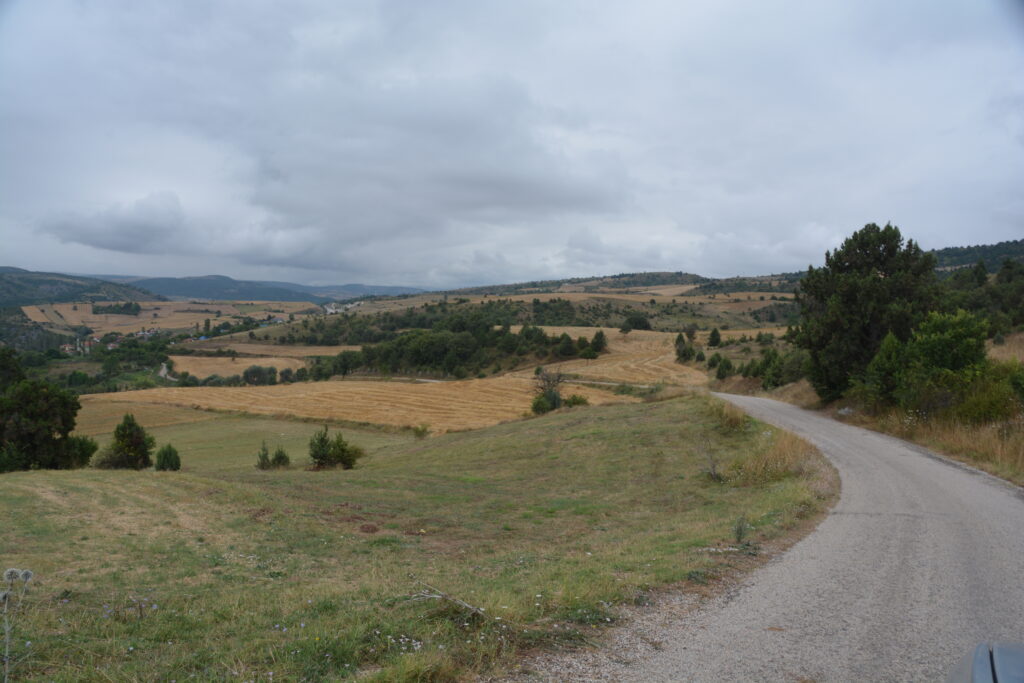
We headed a bit southward from Safranbolu on what was essentially a travelling day, using short sections of motorway but mostly winding our way through the mountains on two lane roads, up and over three passes exceeding 1200 metres (4,000 feet), catching a bit of rain while we were having lunch on the shores of Lake Yenicaga, stopping at a curious place featuring massive calcite flows down the steep hillside, and still more hills until we camped for the night on a ridge overlooking the valley formed by the Sakarya River and the desert mesas on the other side. We had 360-degree views of this wonderous valley.
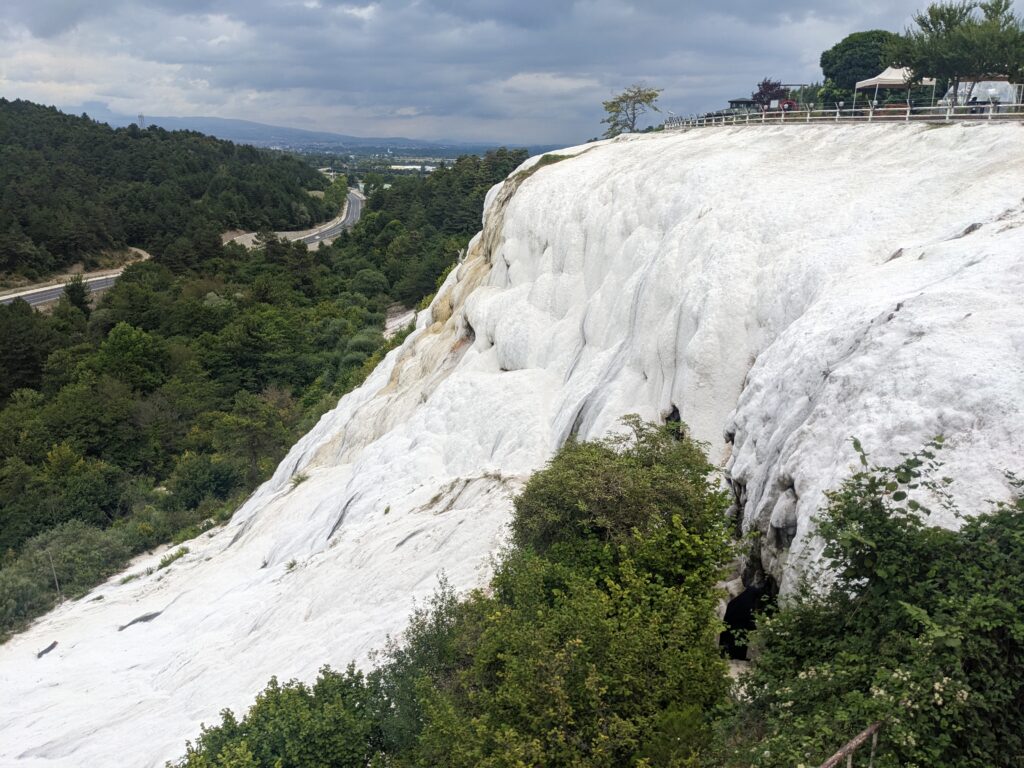
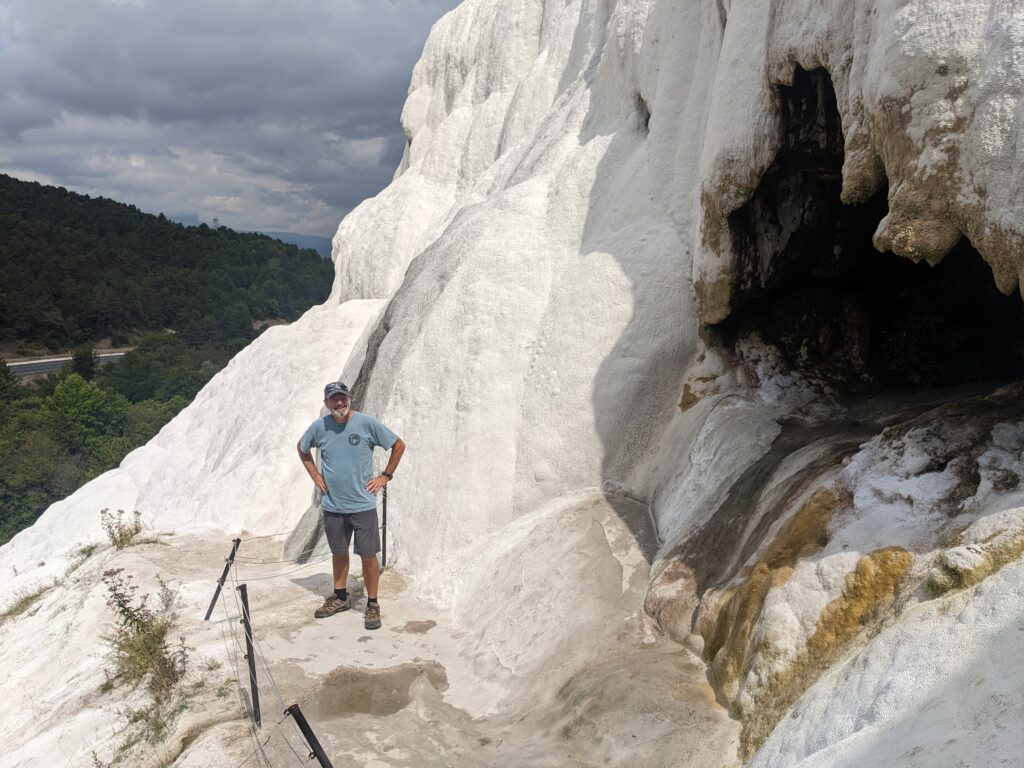
Our target the next day was the popular Ottoman-era town of Eskisehir but to get there we had to negotiate a couple hours of one lane winding road up and over mountains, through tiny villages and across rugged terrain until the town came into view.
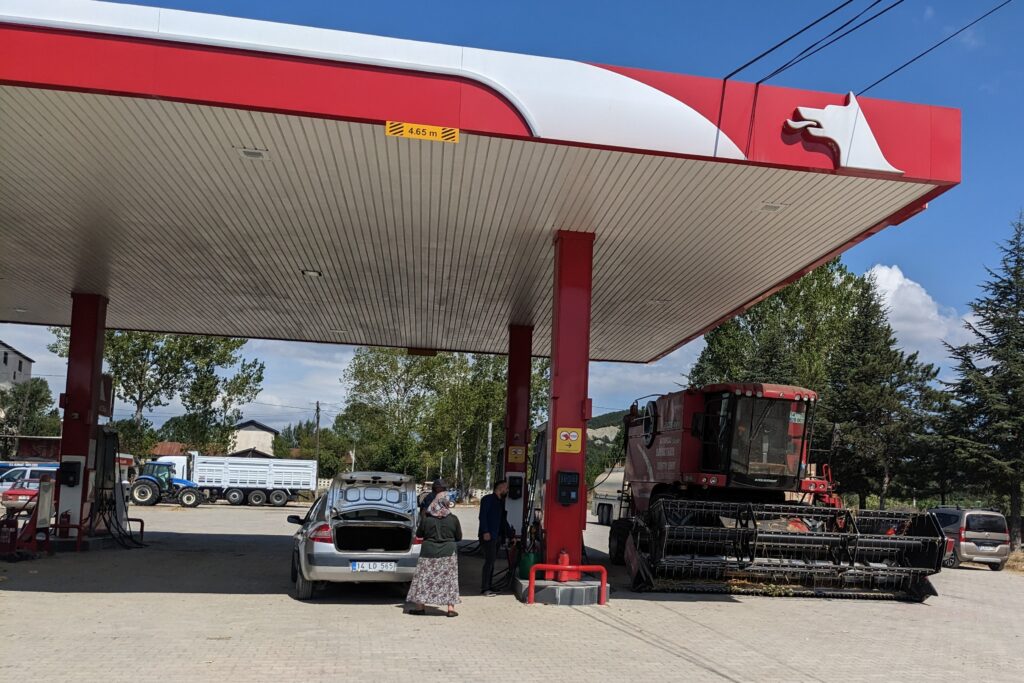
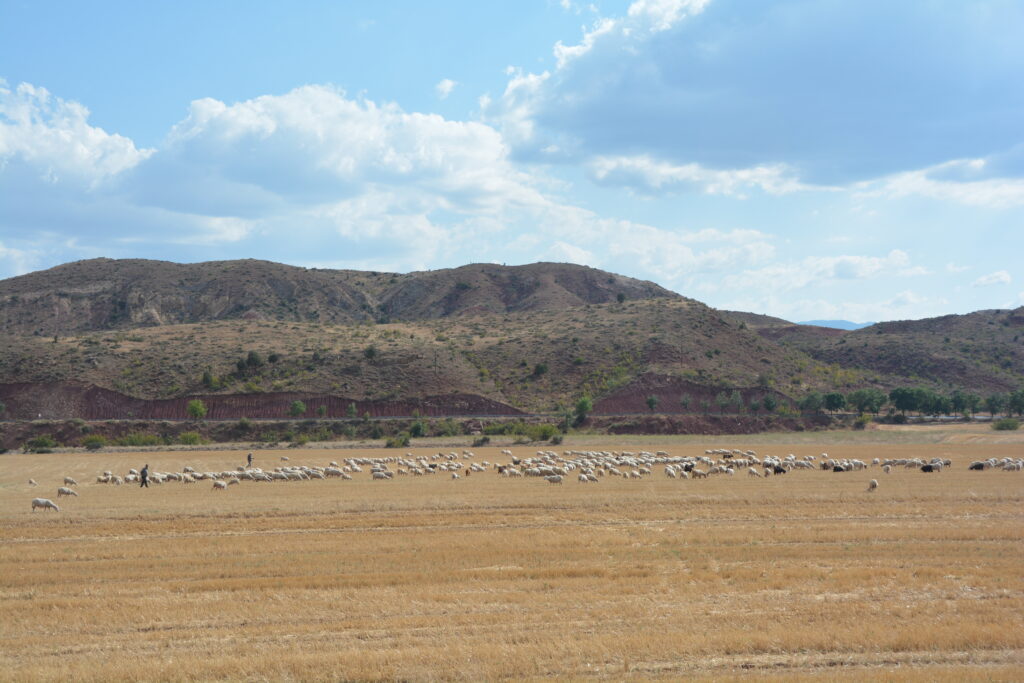
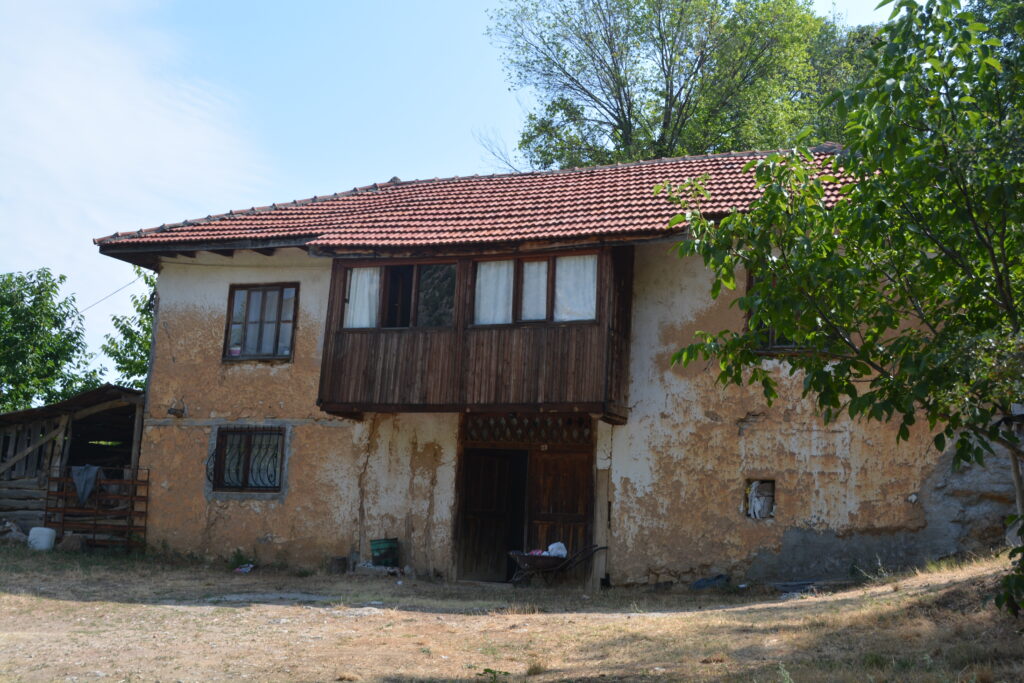
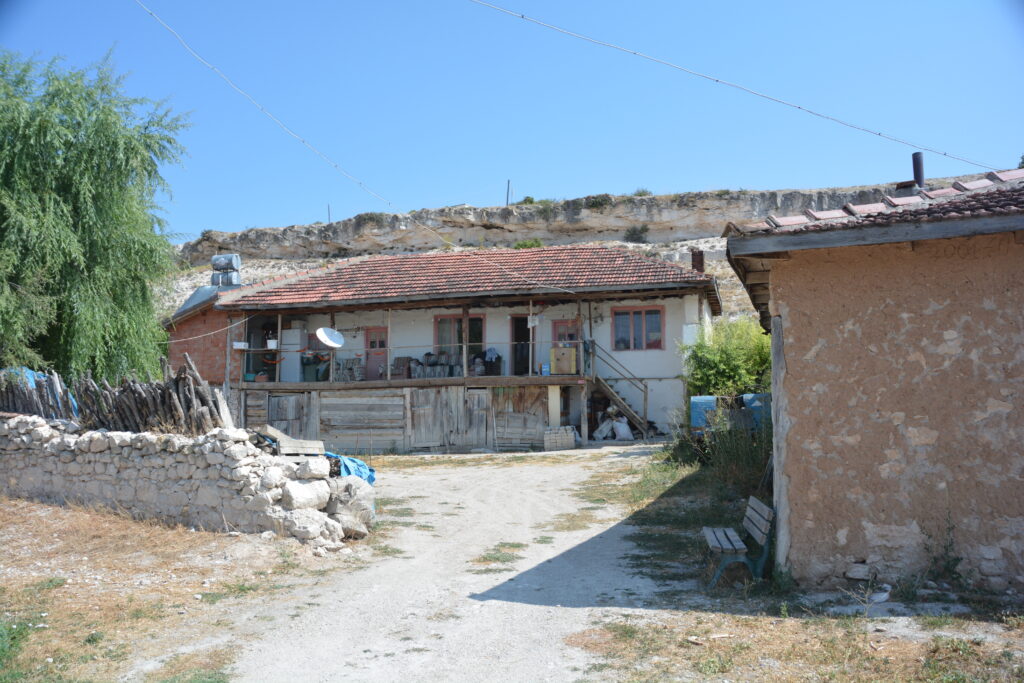
Along the way we passed more refugee settlements, much like we’ve seen in numerous other places. These people, from what we could research, were probably Syrian refugees from their disastrous civil war. Turkey has taken in a staggering four million refugees with the support of the UN – and most of them were Syrians living in desperately harsh conditions in the desert. It was very difficult to see them in such numbers and living in such despair.
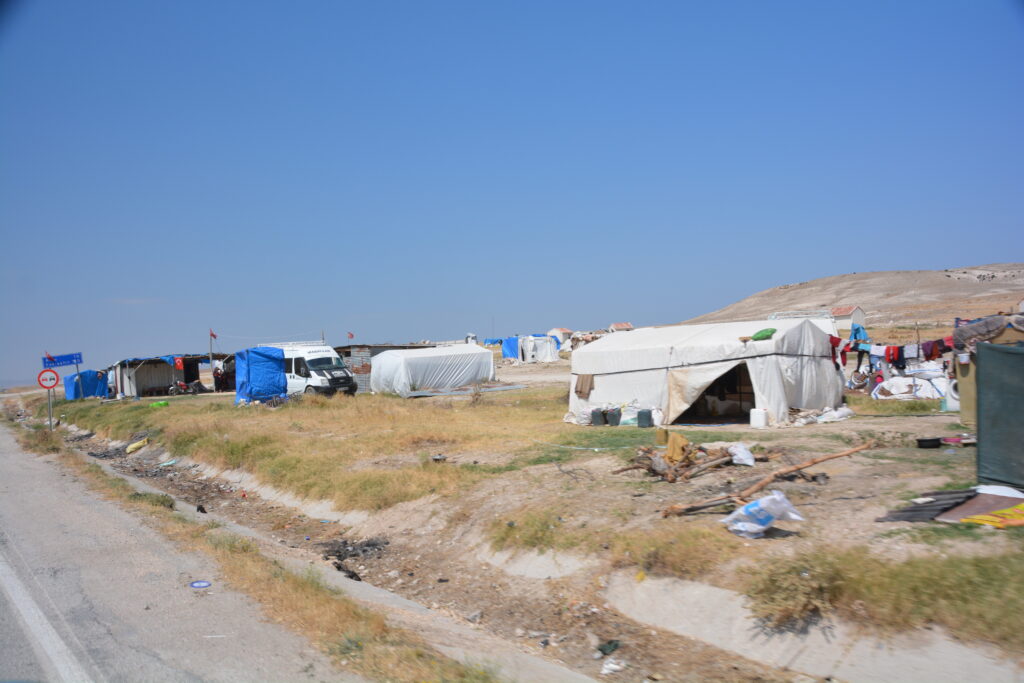
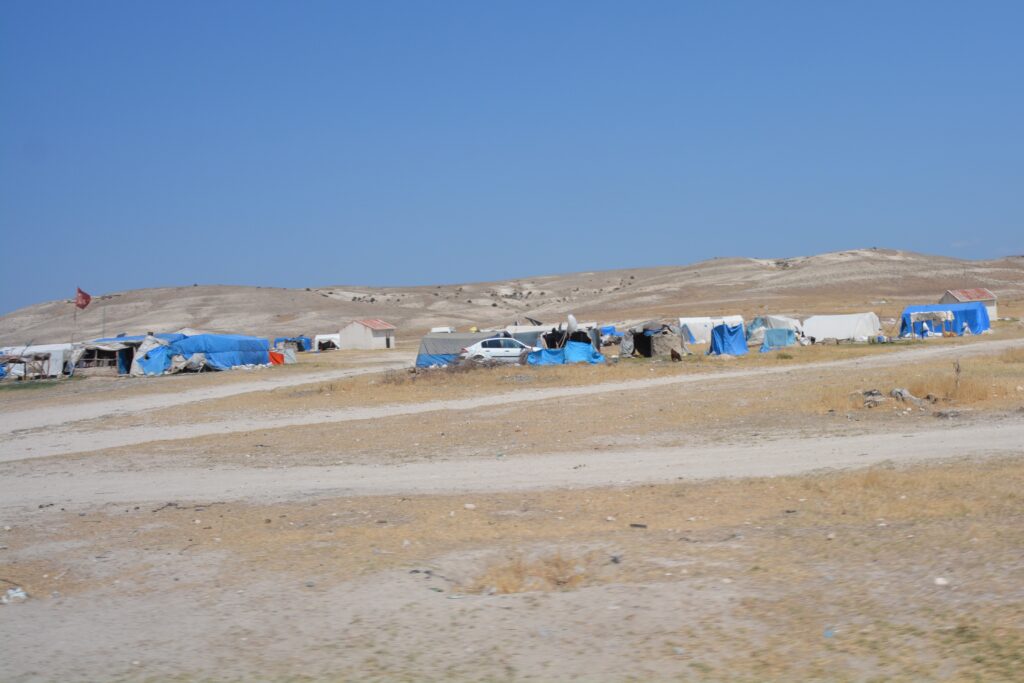
Eskisehir was once an Ottoman crossroads town and in it’s old quarters today it sports hundreds of buildings from that era, although most of them have been substantially renovated. We parked Tramp, no easy thing, and walked into the historic district, absolutely loving the distinctive architecture with the balconies sticking out from the building, the pastel colours and the narrow alleys.
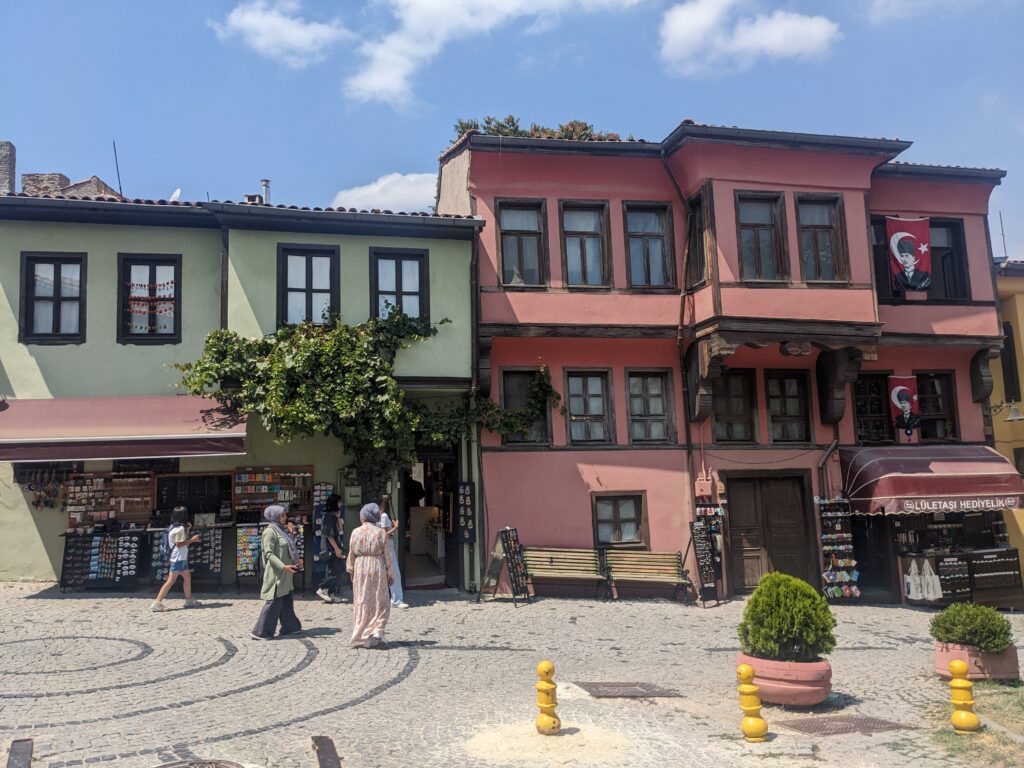
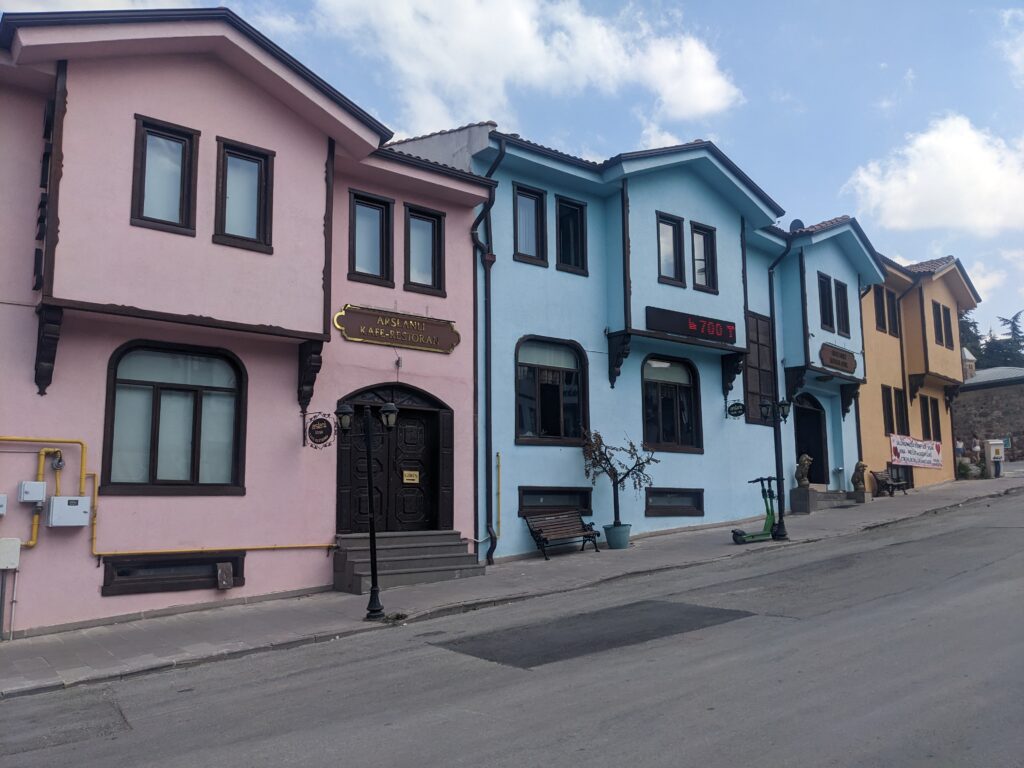
Today Eskisehir has become a popular tourist destination so we joined hundreds of local tourists walking amongst it’s souvenir shops, cafes and boutique hotels. The mosque and the 16th century caravanserai added a bit of authenticity to the modernised buildings.
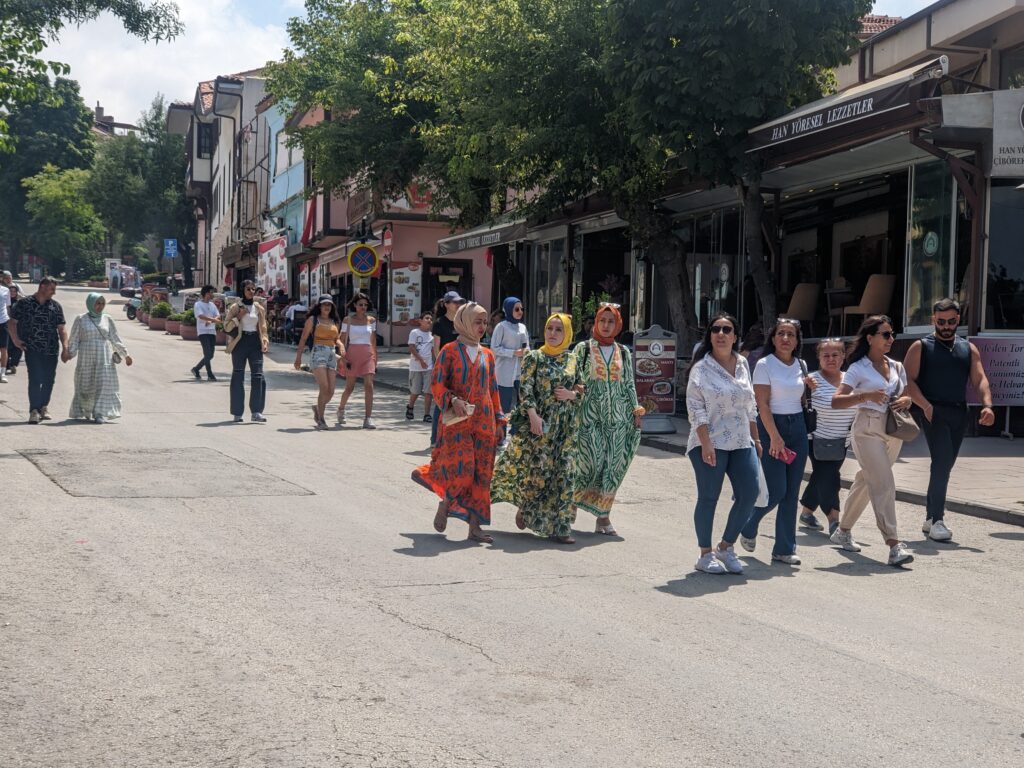
From Eskisehir we headed south into the dry desert-like landscape which featured fields of cut hay wherever a tractor could avoid the substantial rock fields. In this beautiful setting we searched out and found a number of ancient rock carving settlements, home to the Phrygians, a hearty people who lived in this region around the 7th century BC. How they did it we can’t imagine.
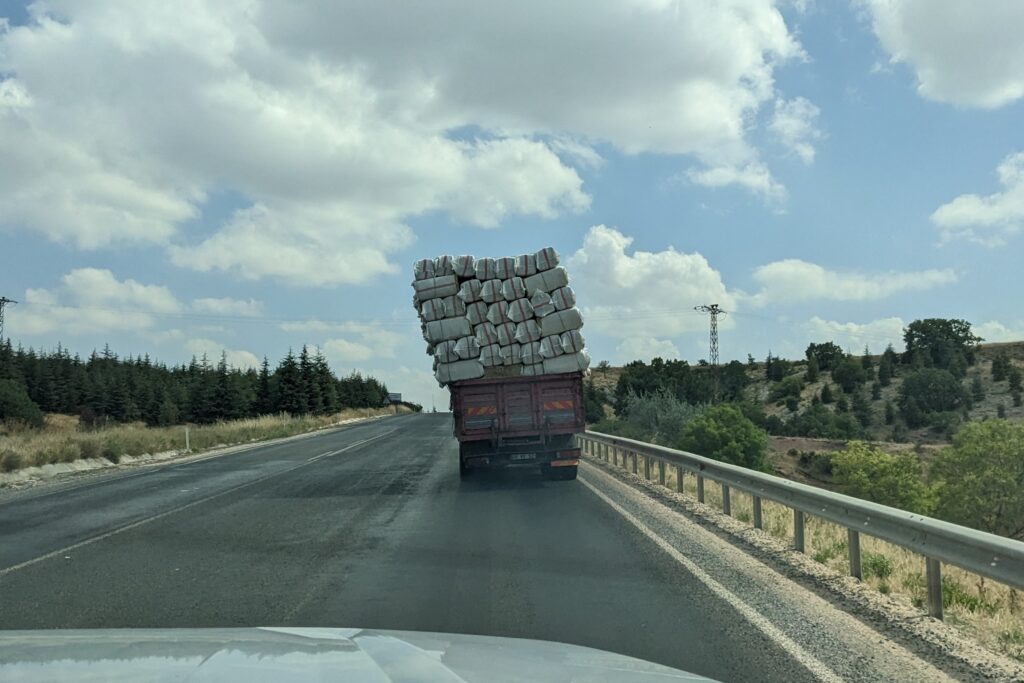
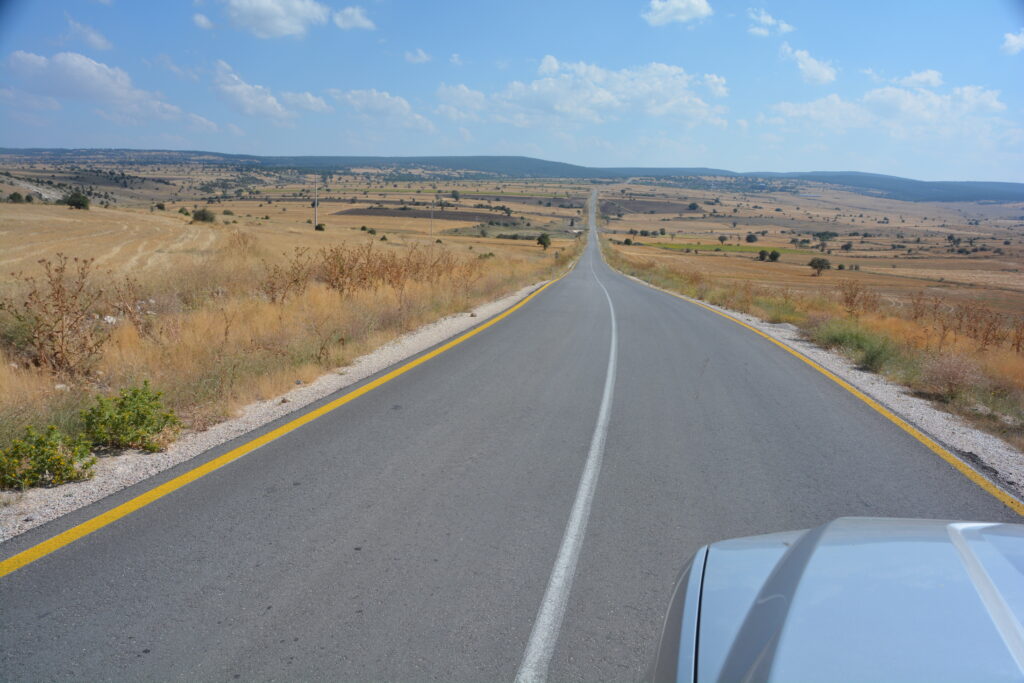
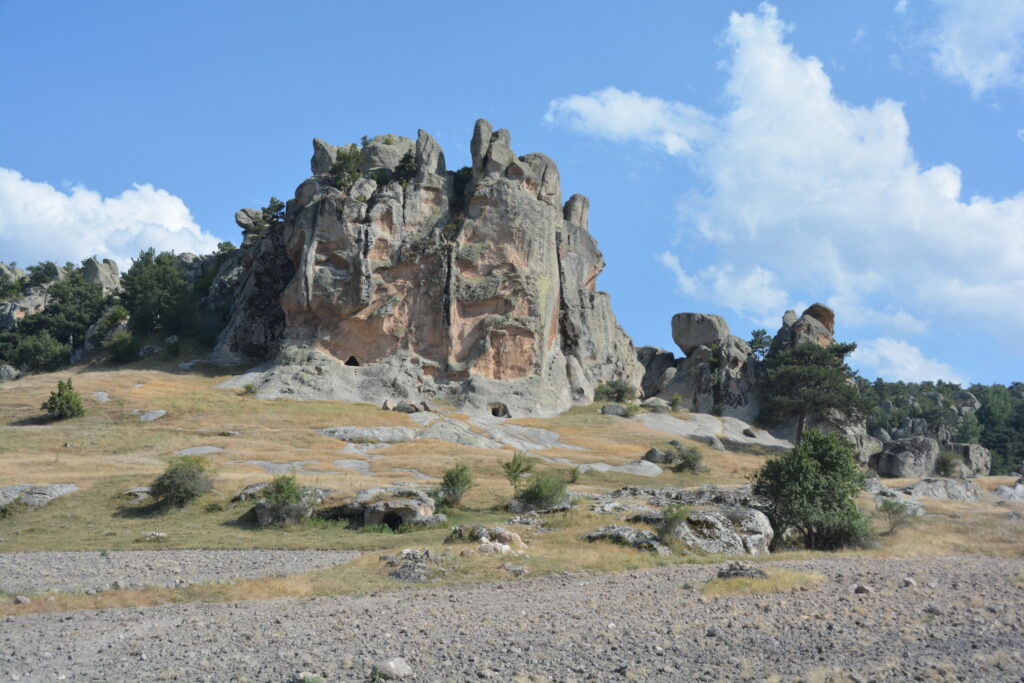
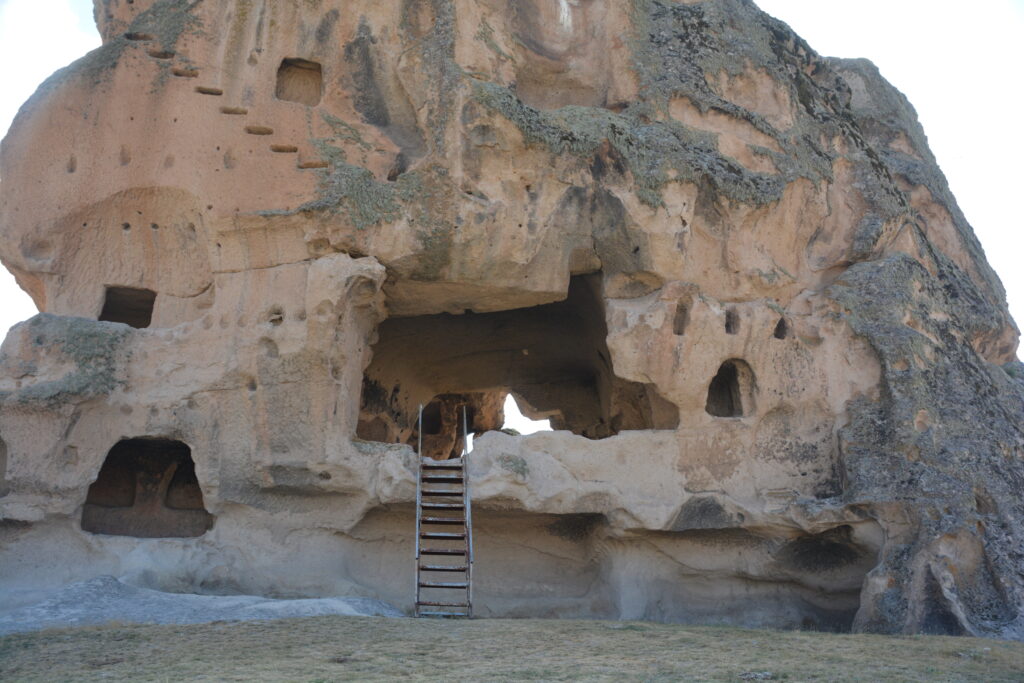
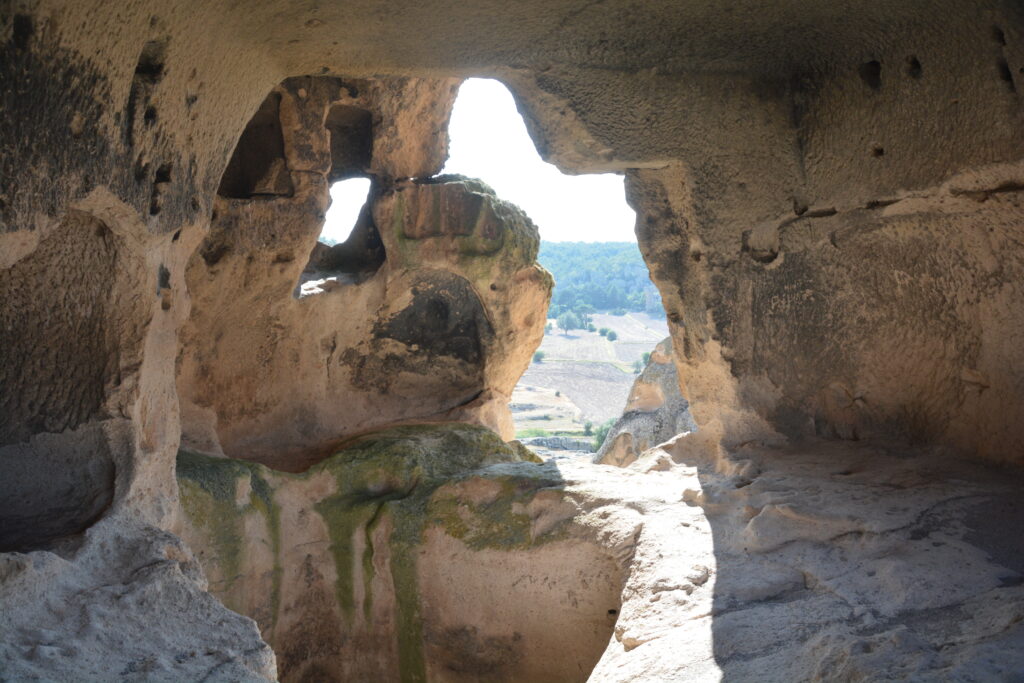
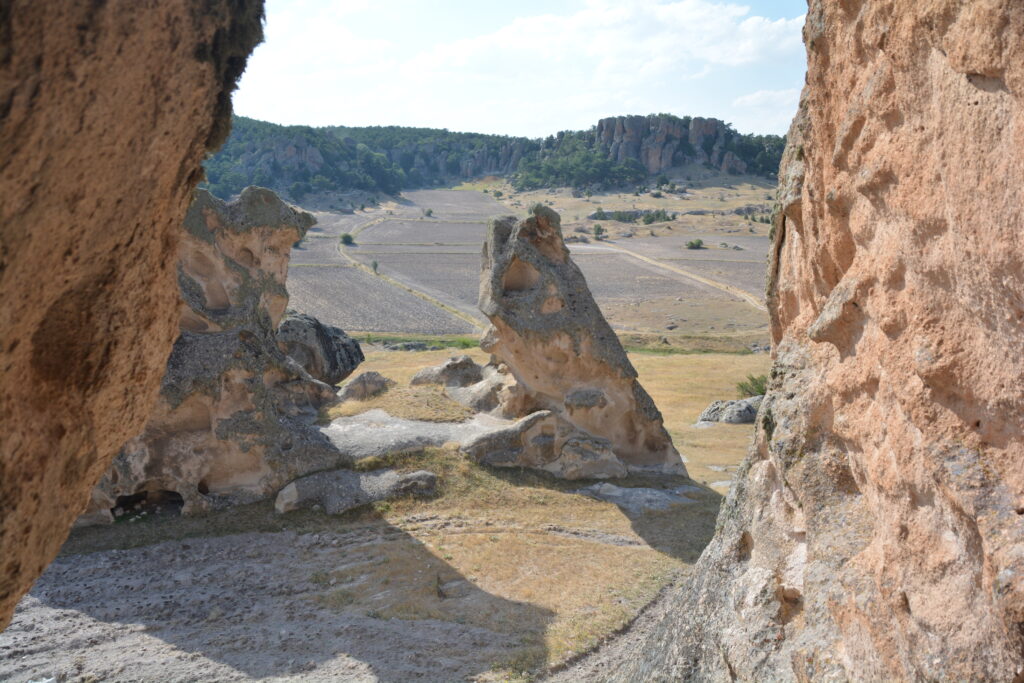
But in honour of them we camped beside Doganli Kale, an impressive sandstone monolith ‘castle’ carved up to house a significant number of people. It was a glorious evening around the fire, stars covering the skies, absolutely in awe of these cave homes for people over 2,500 years ago.
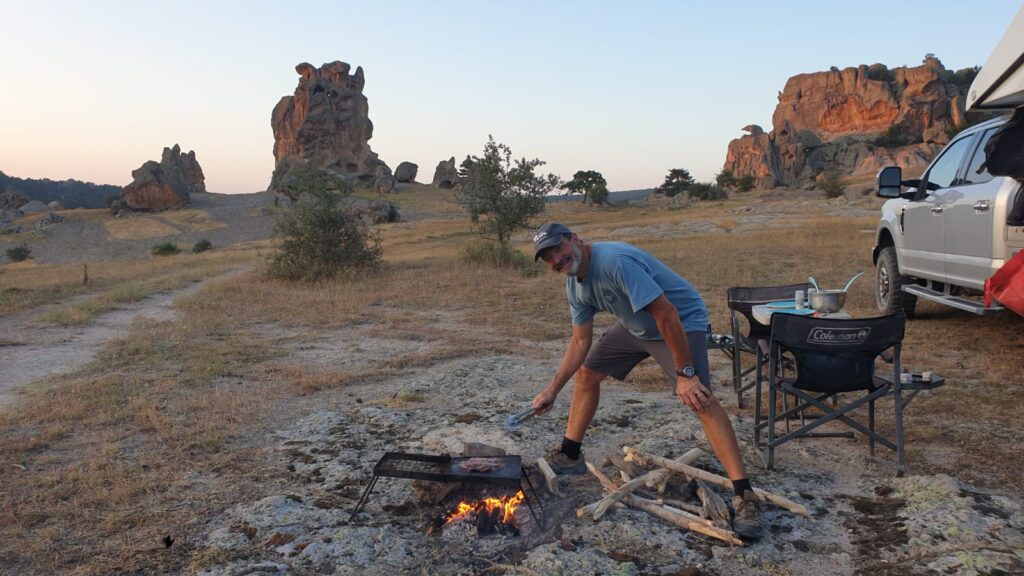
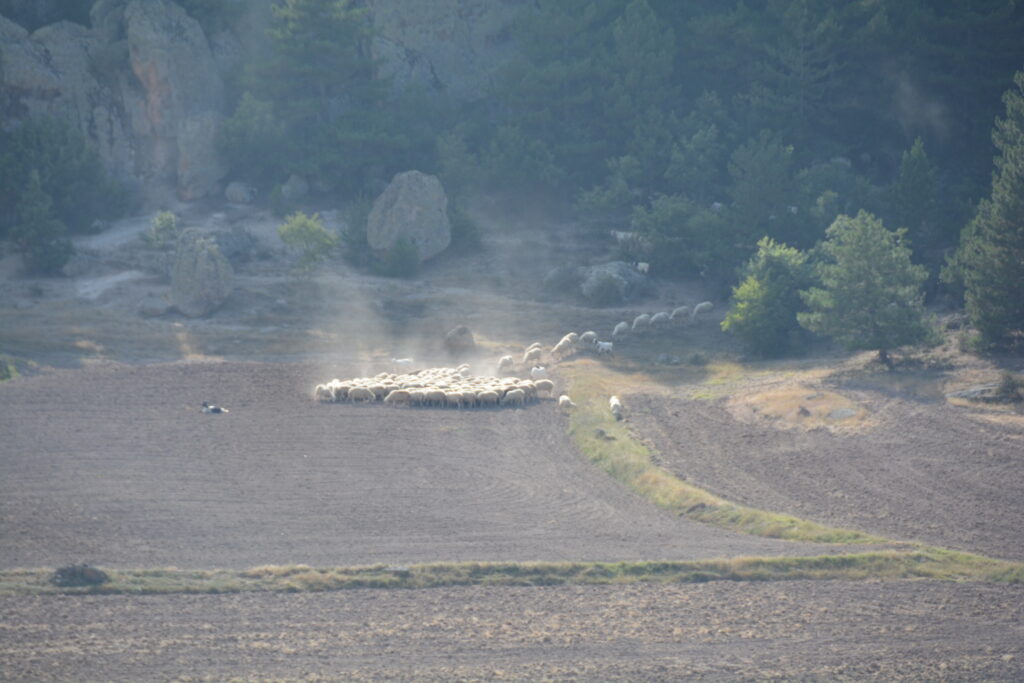
These Phrygians had grabbed our attention so we followed the trail to more of their carved homes, ending at the astonishing carvings at Yazilikaya. Here they carved out multiple settlements, monuments, thrones, even cisterns to ingeniously catch and hold water. We were able to walk amongst all of this and imagine what it must have been like, absolutely in total awe of their achievements. Let’s just say that the Phrygians, whom we had never heard of 24 hours ago, absolutely rock!
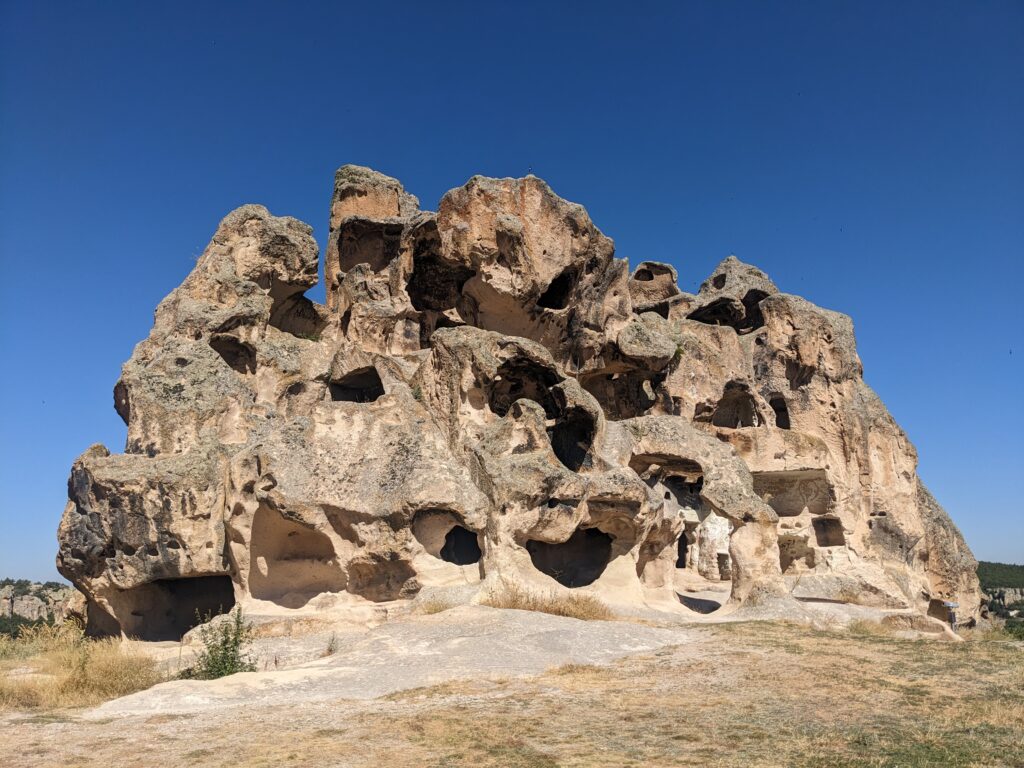
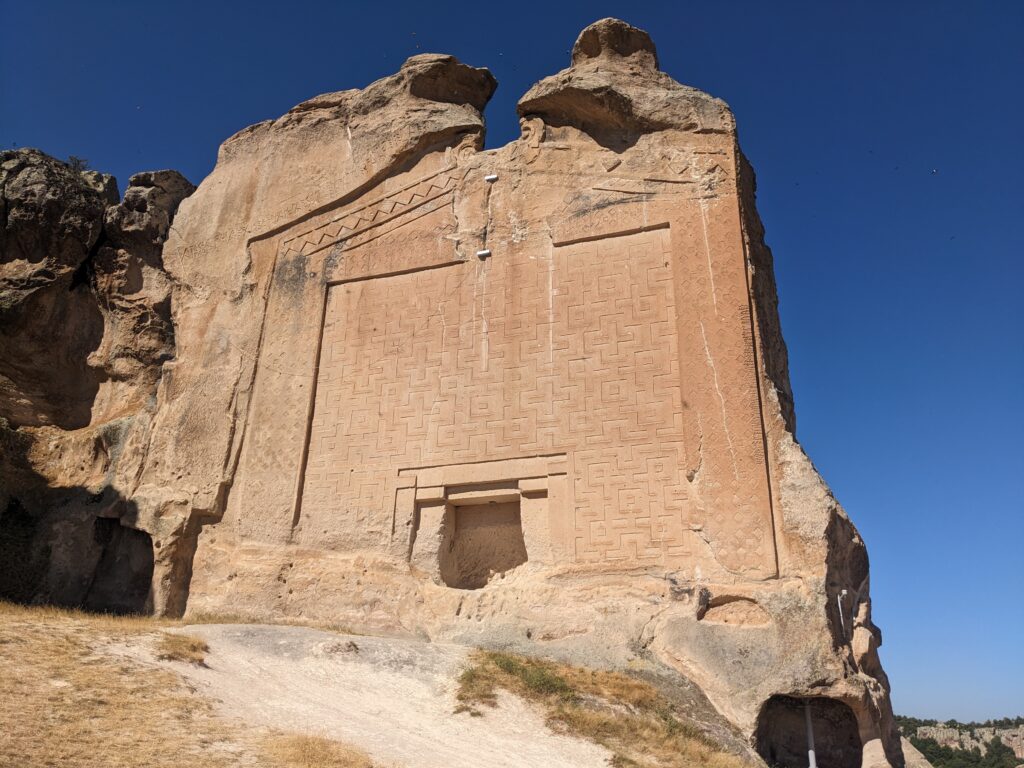
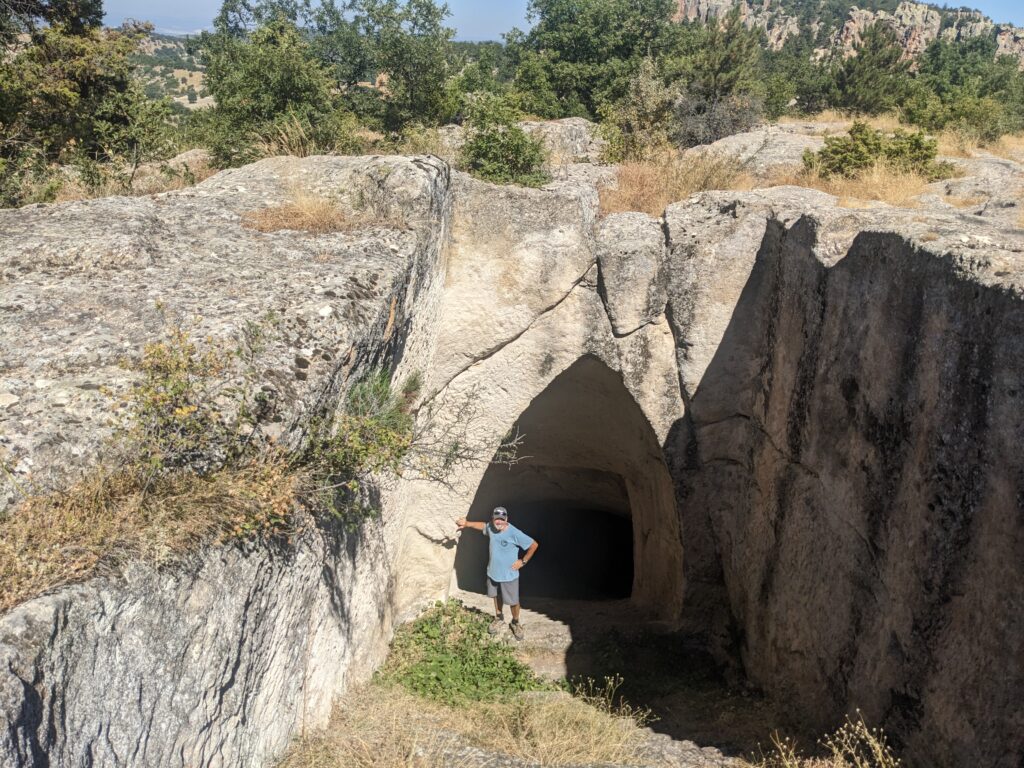
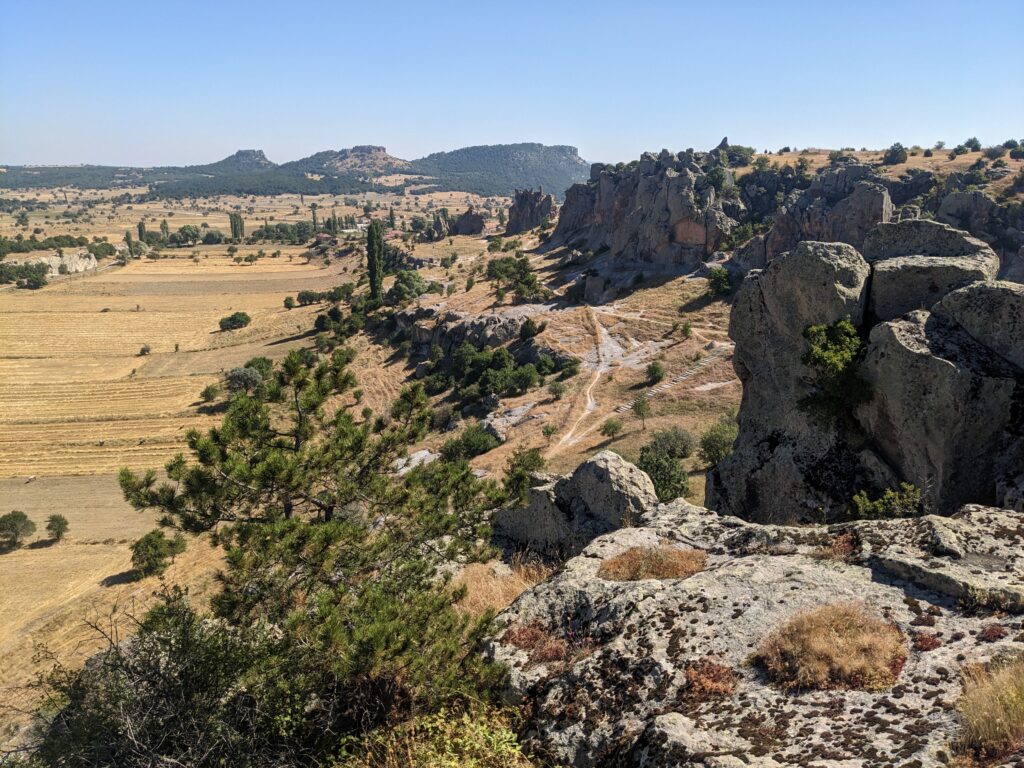
Ever onward, we moved north again to the large city of Bursa to fulfil an ambition we had the first moment we heard of it. You see, cable cars have been a bit of a theme on this trip – we’ve done five of them in other locations and knocked one back because of the huge tourist charge. But the otherwise nondescript city of Bursa hosts the self-proclaimed longest cable car in the world…so of course we had to do it.
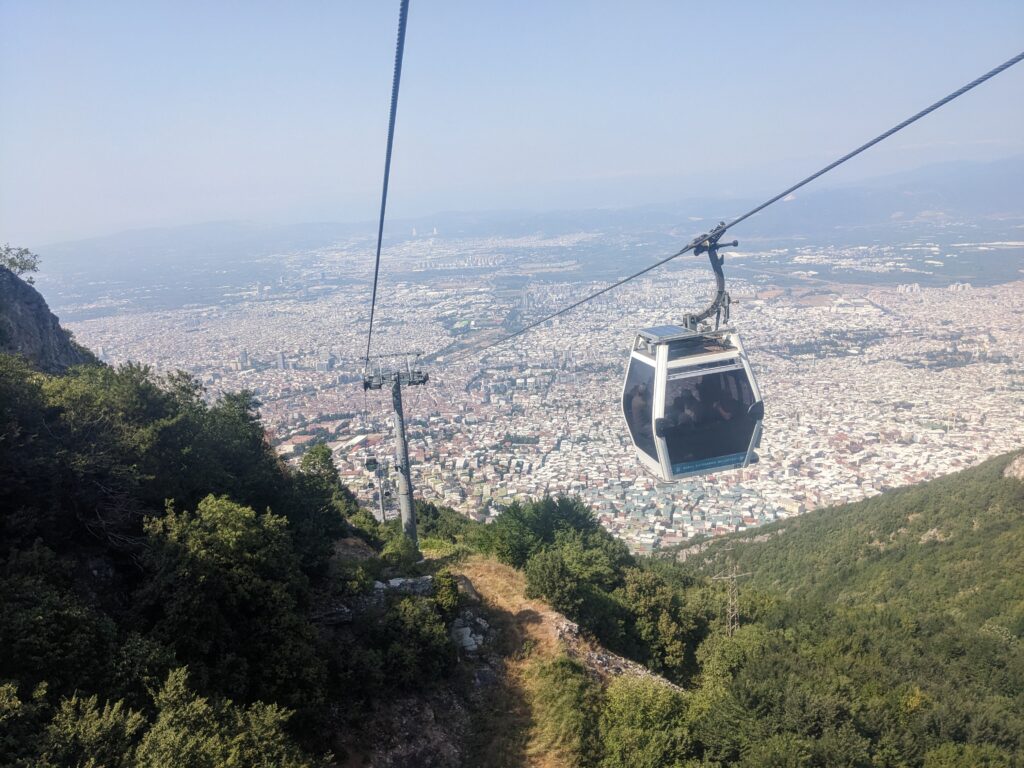
The Uludag Teleferik is a 22 minute cable car ride up a vertical climb of 1600 metres to a midway station, then you change cable cars and ride another 15 minutes to the base of the Uludag ski resort and hotel complex site. Turkish people pay 190TL (about A$10.50) but foreigners have to pay 590TL (A$33.00) for the full return ride. We have seen this huge price discrepancy many times before in many countries and we get it, we understand why they do it, but it still irks us a bit. Jabbing the tourists we say.
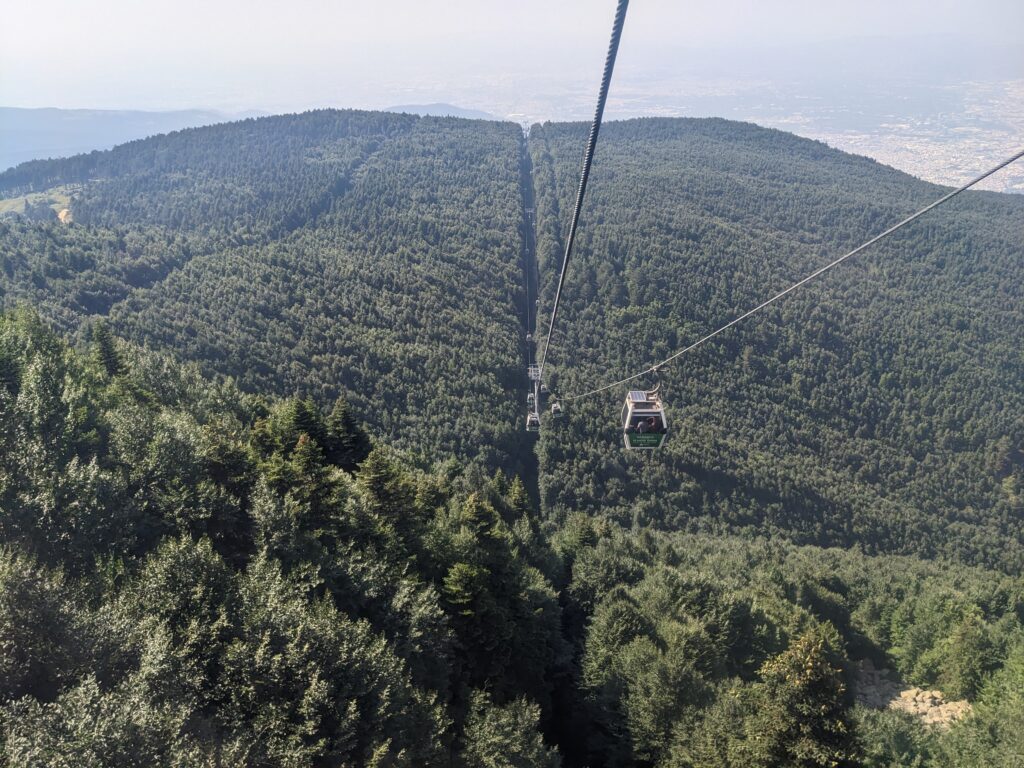
The whole ride up to the top, explore the base of the ski resort area and then return trip was great fun, riding with Turkish families, some of whom wanted to talk to us, fabulous views of the city below, the mountains above and the forest in between. Turkey knows how to do it big and bold – and the locals know how to enjoy themselves on a Sunday afternoon.
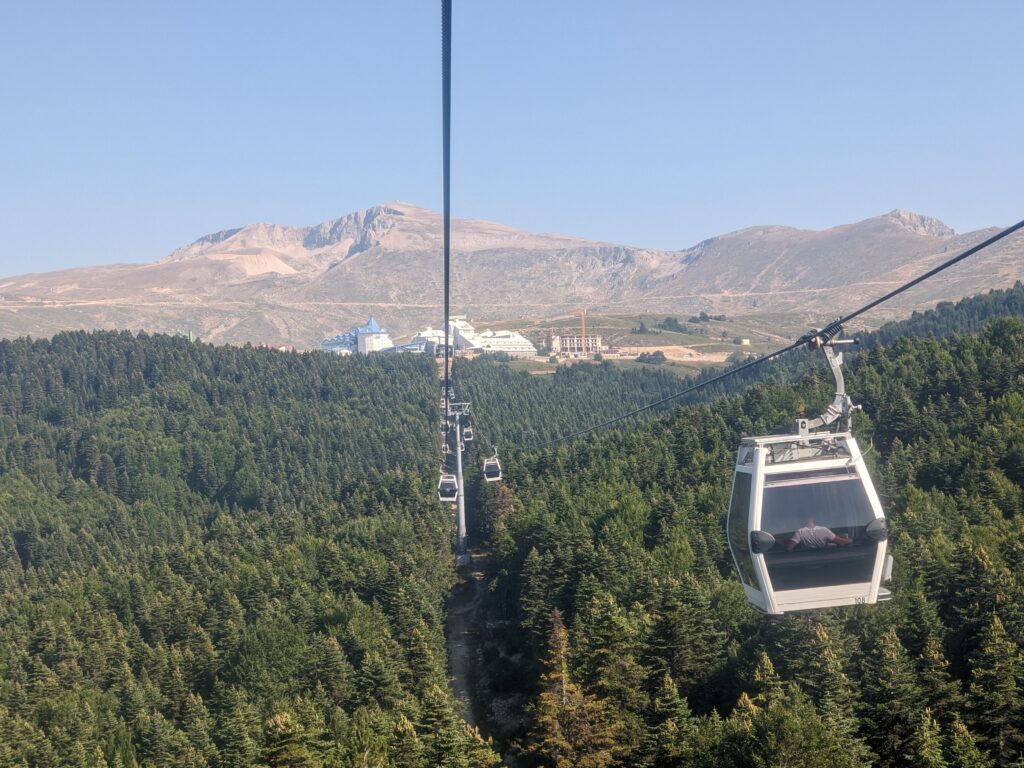
We headed back down the hill through the chaotic suburbs, a campsite in mind. But suddenly, loudly, Tramp started to make some horrific noises from under his bonnet and it became almost impossible to steer the mighty beast. Something had suddenly gone catastrophically wrong.
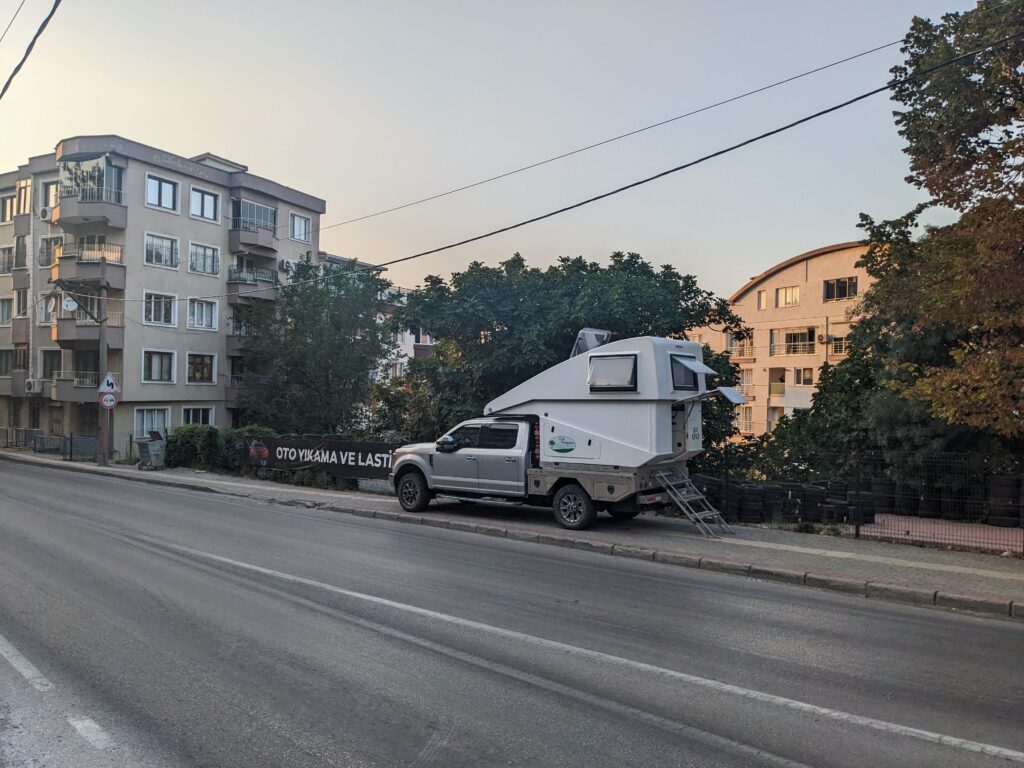
We clanged to a stop on the side of the road, fortuitously across the street from a tyre repair place which attracted the immediate attention of their four staff. Within a minute we had collectively determined that the serpentine belt had shredded and we were a goner. The Serpentine belt controls the power steering mechanism but also impacts the alternator, which hits the battery, and other critical components. Oh no, not again.
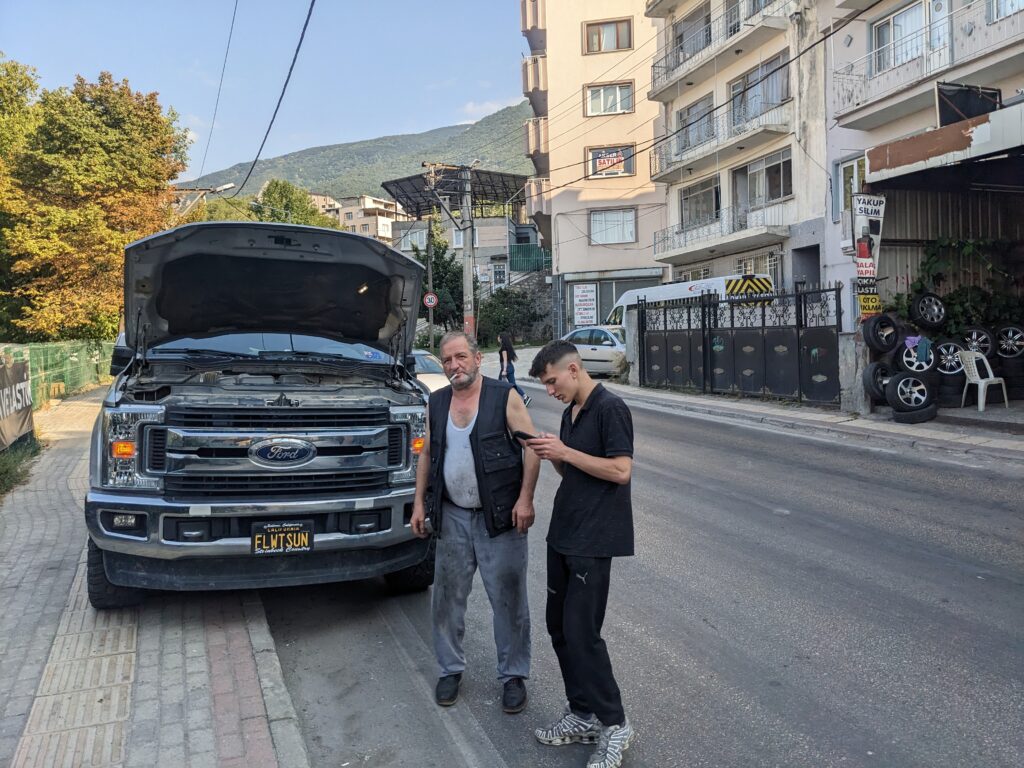
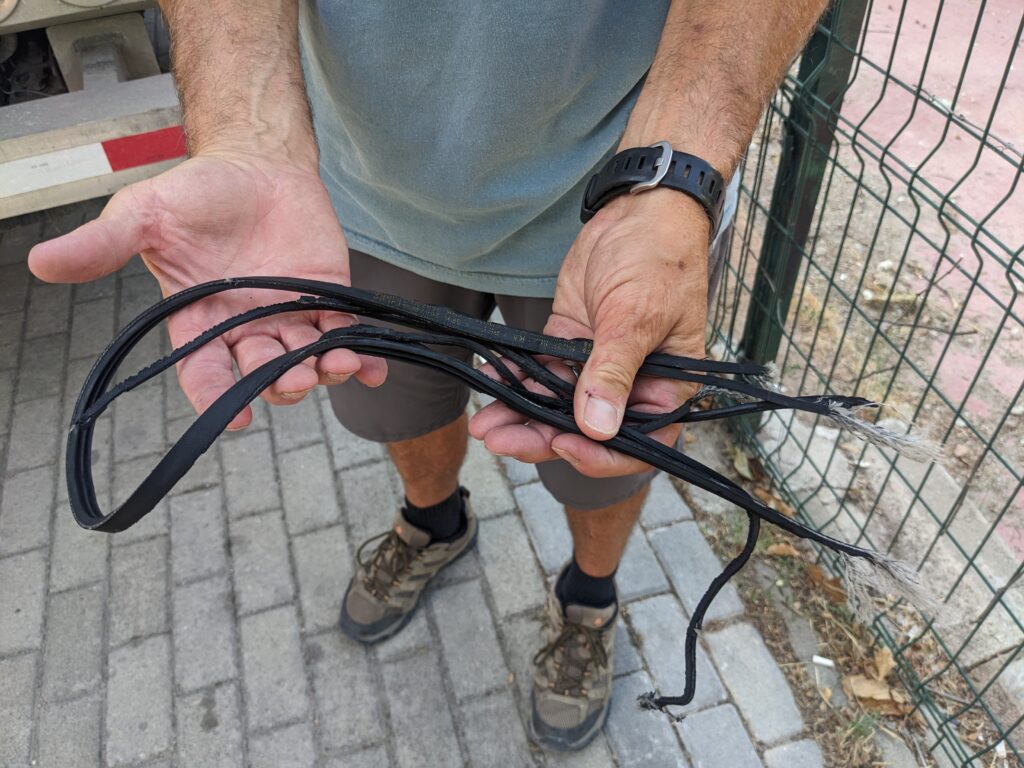
A belt on a relatively new heavy duty truck like Tramp should not shred at this stage in it’s life and I immediately wondered if it had something to do with him being drug off the beach a few days before. Whatever the case, we were in deep poo. But, as always in Turkey, people were on hand to help and with the heavy use of Google Translate a plan was actioned – a mechanic of a friend came who knew another mechanic three kilometres away that maybe could fix it the next day. Slowly and carefully we drove the short distance in a wounded Tramp and parked on a side street for a noisy and stressful night.
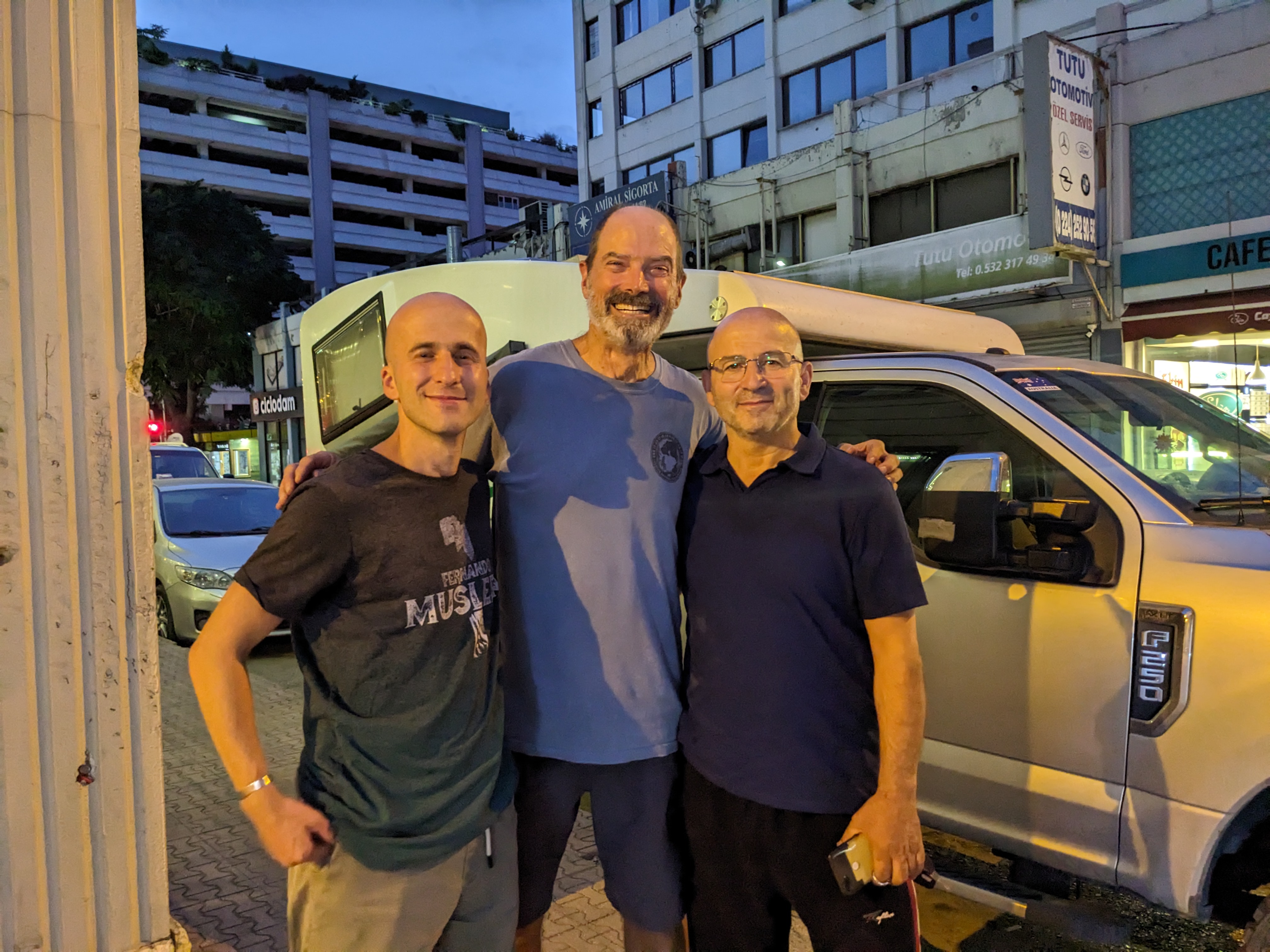
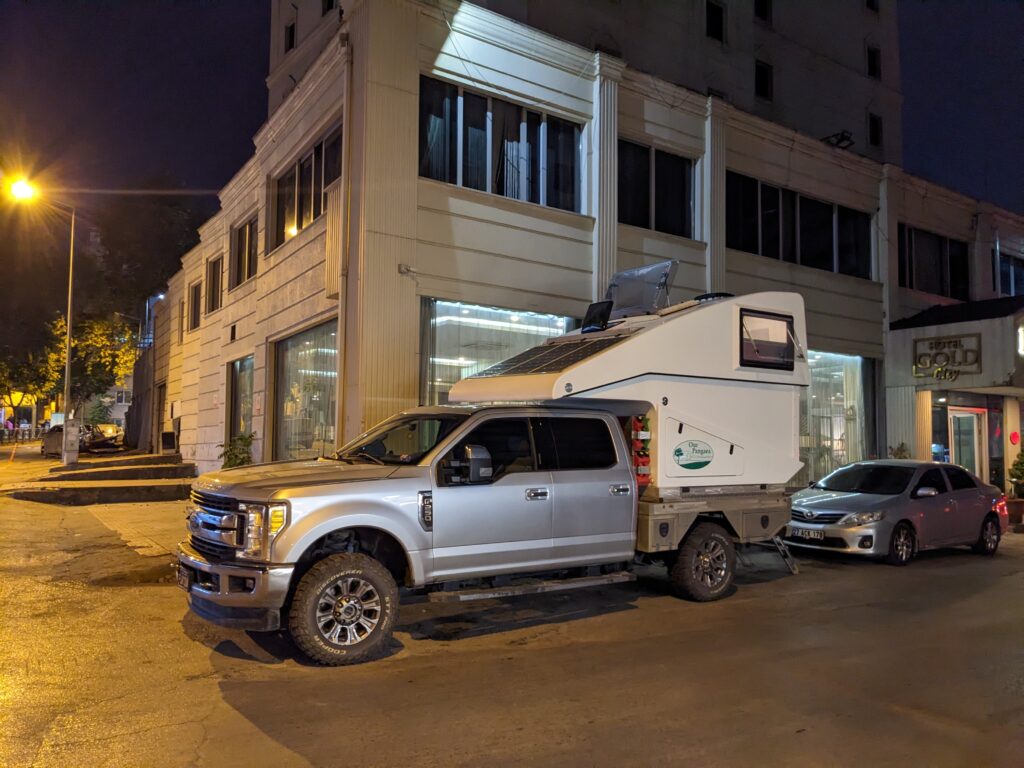
The next morning Tutu, the recommended mechanic, arrived and immediately got to work. He said he could find a replacement belt and have us going later that day. And true to his word, while we waited in the stuffy lobby of an old hotel next door, he and his guys found the replacement belt – how did he do that? – and we were on our way by 3pm.
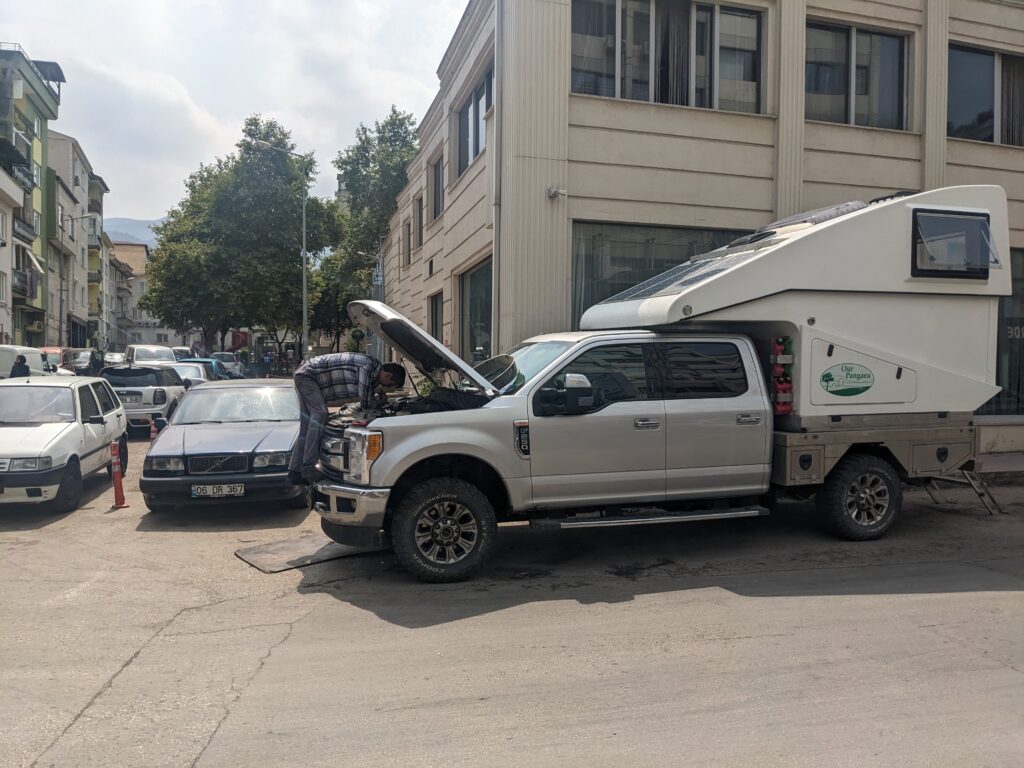
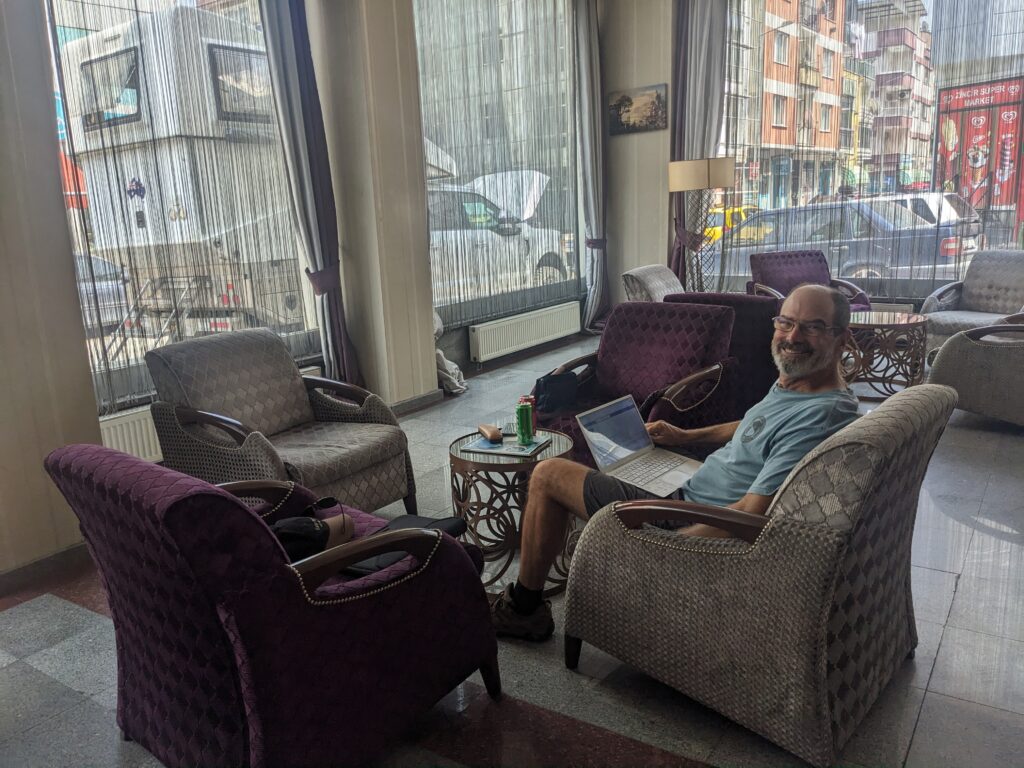
And so the story is repeated again, the Turkish people are incredibly friendly, helpful and supportive every time we interact with them and we are so thankful and grateful for all these wonderful people and how they help us when we’re in strife.
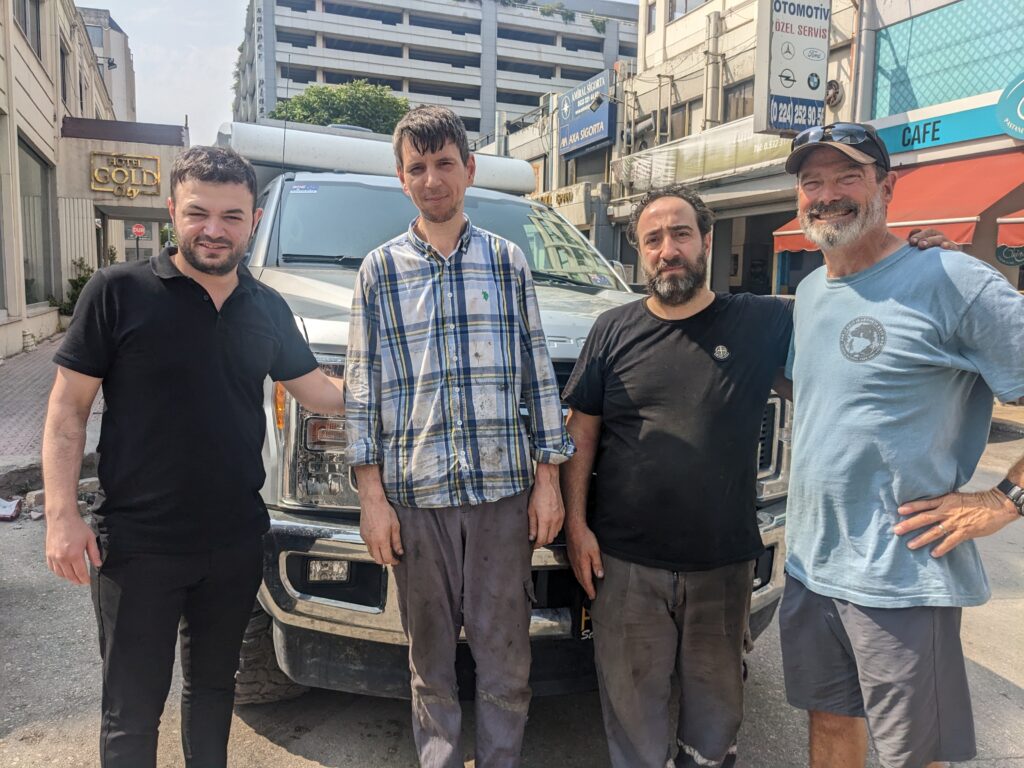
So we were off to our next destination, and a very special celebration, in Istanbul!
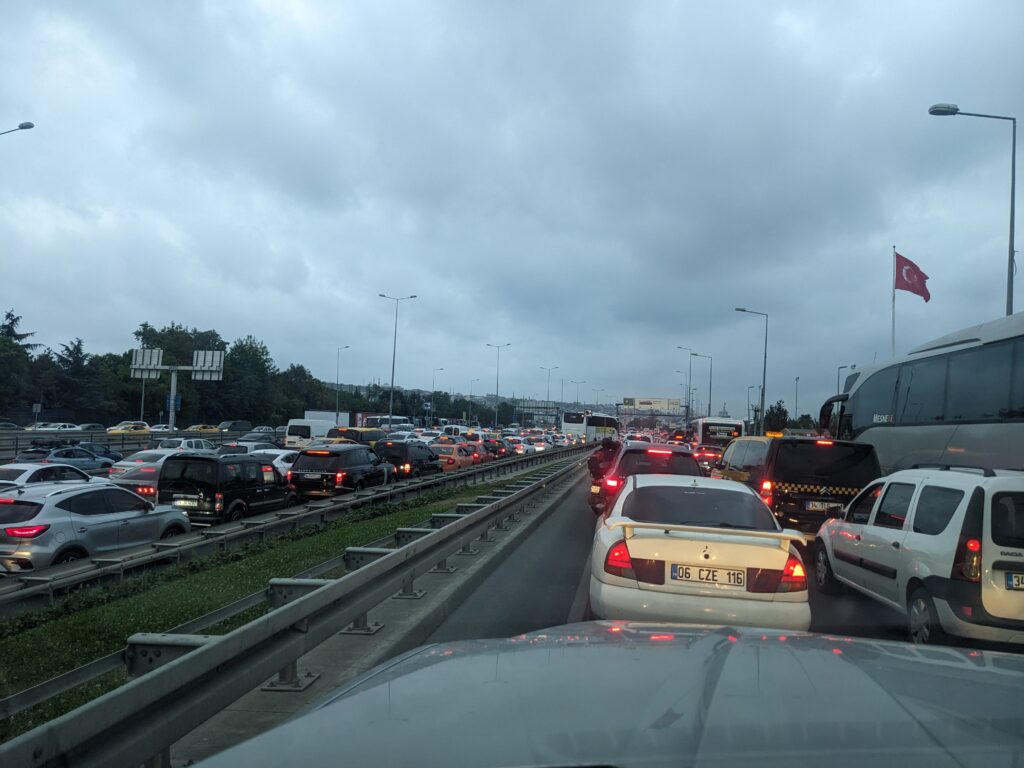
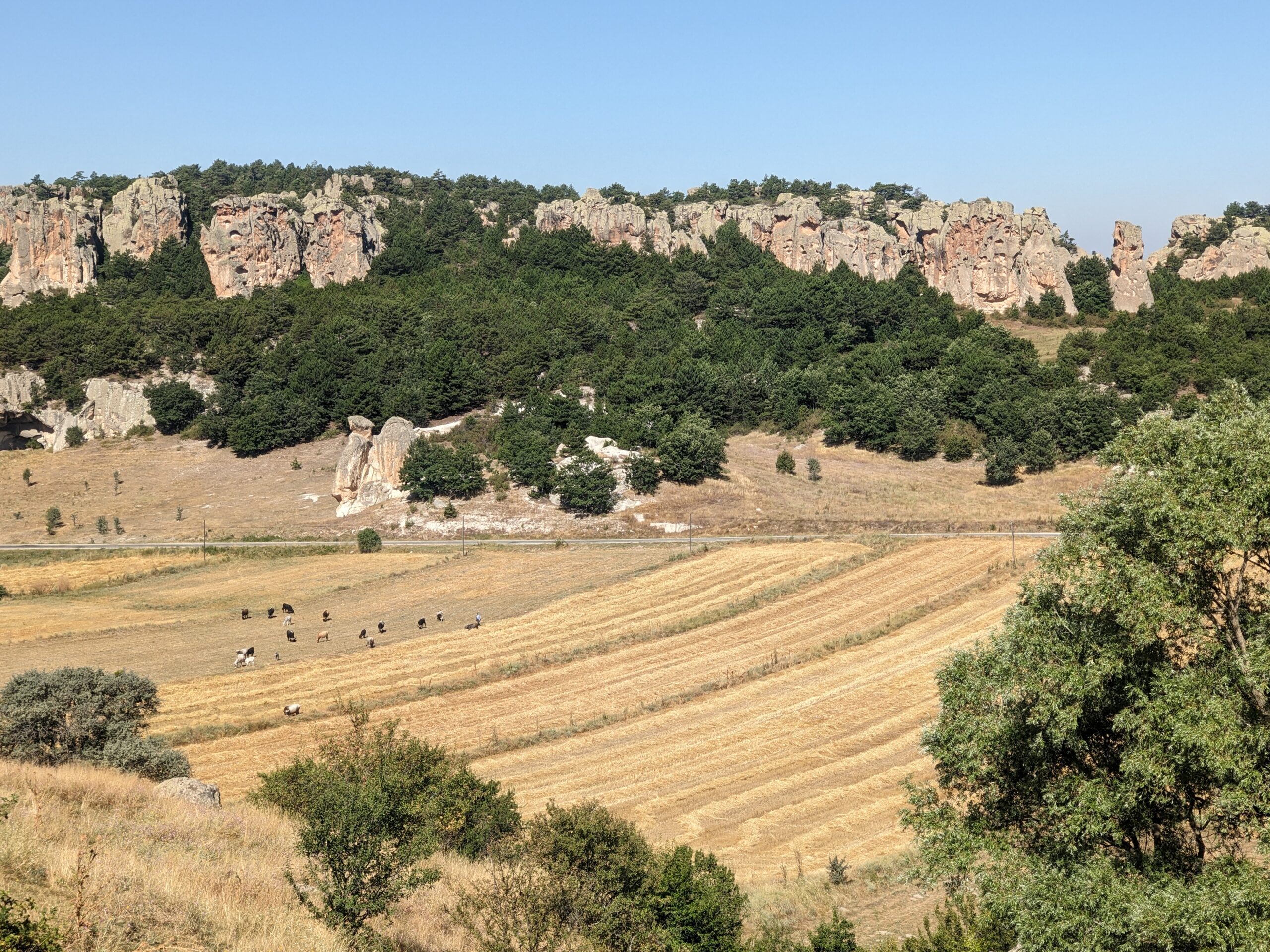
Comments
Western Anatolia — No Comments
HTML tags allowed in your comment: <a href="" title=""> <abbr title=""> <acronym title=""> <b> <blockquote cite=""> <cite> <code> <del datetime=""> <em> <i> <q cite=""> <s> <strike> <strong>